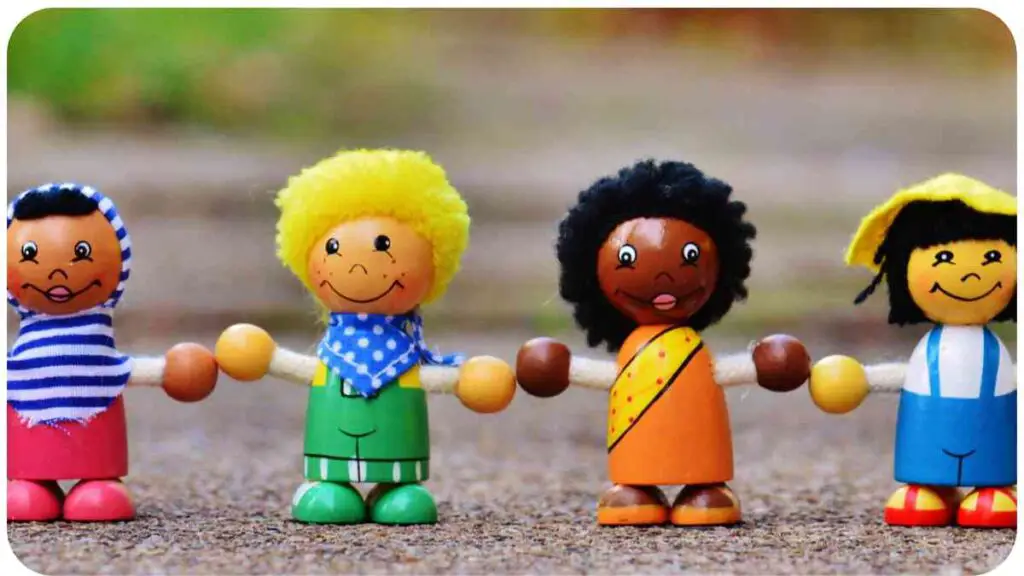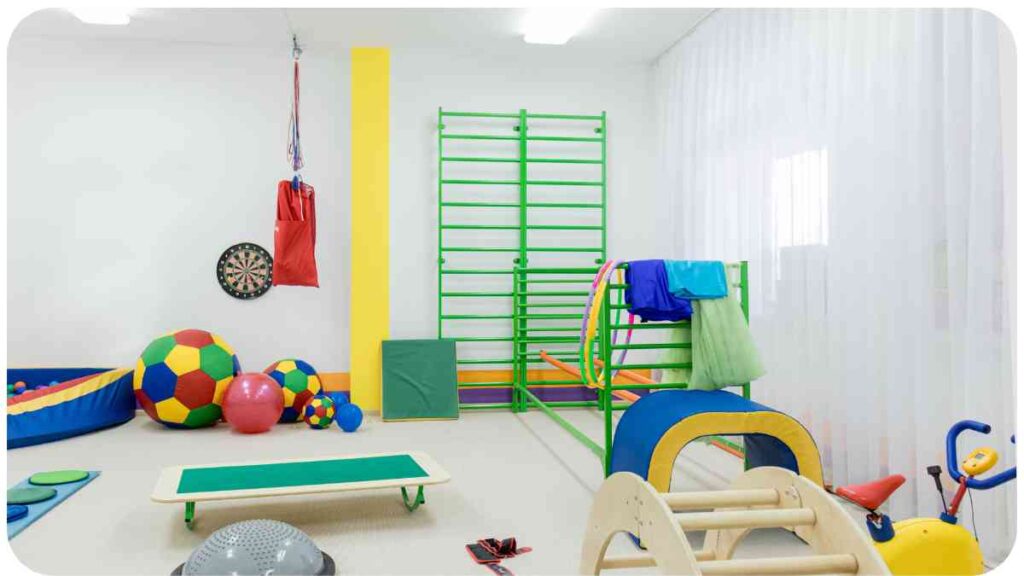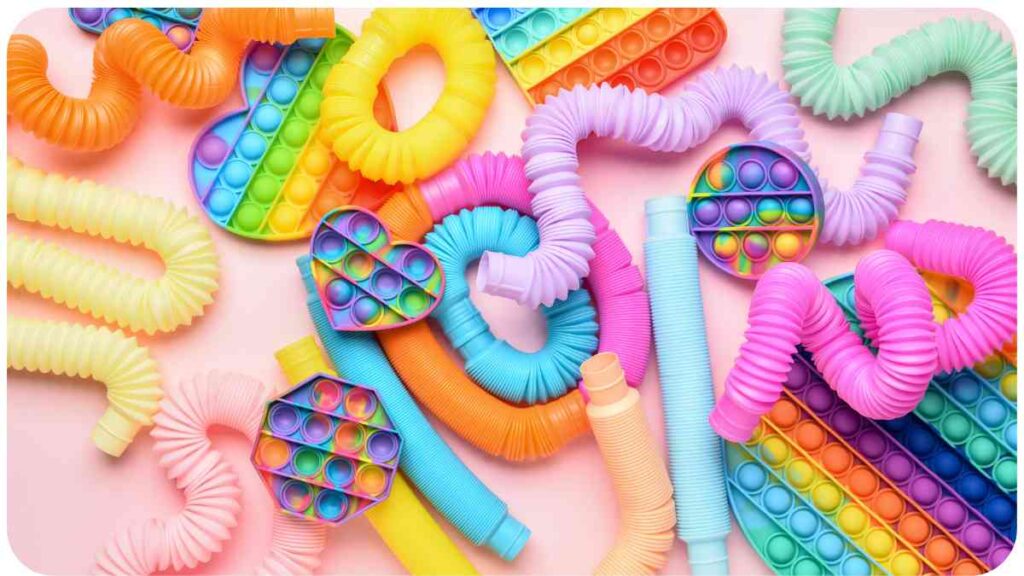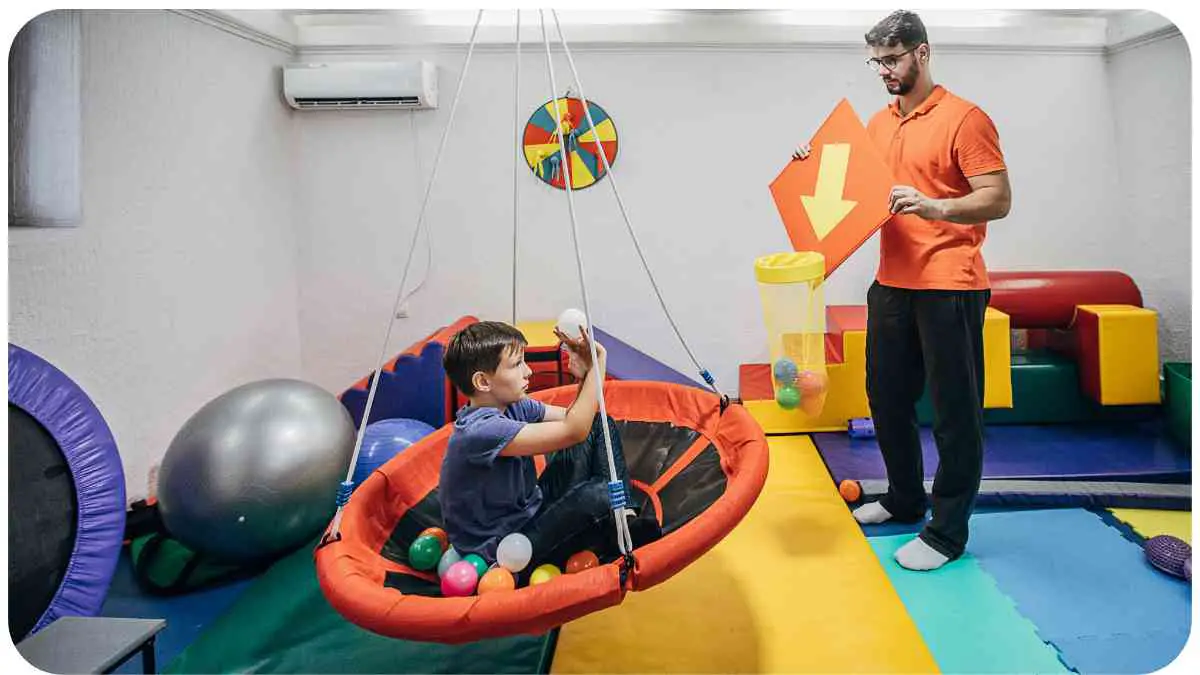Welcome to our guide on choosing age-appropriate sensory toys for your child. Sensory toys can play a significant role in promoting your child’s development and overall well-being. They engage multiple senses, stimulate creativity, and provide valuable learning experiences.
In this article, we will explore the world of sensory toys, their benefits, and how to select the right toys for children of different age groups. We will also discuss important factors to consider and provide insights and recommendations based on our expertise in the field.
Now, let’s dive into the wonderful world of sensory toys and learn how to make informed choices for your child’s playtime adventures.
| Takeaways |
|---|
| Choose age-appropriate sensory toys based on your child’s developmental stage and interests. |
| Consider safety factors, such as non-toxic materials and age-appropriate designs, when selecting sensory toys. |
| Seek out reputable brands or create DIY sensory toys to provide engaging and customized play experiences. |
| Create sensory-friendly environments that encourage focused and immersive play with sensory toys. |
| Take an active role in playtime, engaging with your child, asking questions, and encouraging exploration and creativity. |
| Sensory toys can support various aspects of development, including cognitive, physical, social, and emotional skills. |
| Explore online resources and expert advice to learn more about choosing the best sensory toys for your child. |
Understanding Sensory Toys
What Are Sensory Toys?
Sensory toys are specially designed play items that engage a child’s senses, such as touch, sight, hearing, and sometimes even taste and smell. These toys are thoughtfully crafted to provide sensory stimulation, promote exploration, and enhance cognitive, motor, and social skills development.
“In the world of gardening, understanding how often to replace potting soil is crucial. Just like choosing toys for kids, maintaining the right environment for plants is essential for their growth and development.”
Benefits of Sensory Toys for Children

Integrating sensory toys into your child’s playtime routine can have numerous benefits. These toys help enhance sensory processing, decision-making abilities, and problem-solving skills. They also encourage creativity, imagination, and emotional regulation. Additionally, sensory toys can be particularly beneficial for children with sensory processing disorders or developmental delays.
Age-Appropriate Considerations for Sensory Toys
When selecting sensory toys, it is crucial to consider your child’s age and developmental stage. Different age groups have distinct needs and preferences when it comes to sensory play. Choosing toys that align with your child’s abilities and interests ensures optimal engagement and enjoyment.
“When it comes to creating a garden, finding a good sandy potting mix is a priority. Just like choosing appropriate sensory toys, selecting the right soil mix ensures a solid foundation for growth.”
Choosing Sensory Toys for Different Age Groups
Sensory Toys for Infants (0-12 months)
During the first year of life, infants experience significant sensory development. They rely on their senses to explore the world around them. Here are some key considerations for selecting sensory toys for infants:
| Toy Category | Description |
| Soft Textures | Provide plush toys with different fabric textures for tactile exploration. |
| High-Contrast | Select toys with black and white or high-contrast patterns to stimulate visual development. |
| Rattles | Choose toys that make gentle sounds to enhance auditory stimulation and grasp reflex development. |
| Teething Toys | Opt for safe teething toys to soothe gums and promote oral sensory exploration. |
Sensory Toys for Toddlers (1-3 years)
Toddlers are curious explorers, eager to engage their senses and develop their motor skills. When choosing sensory toys for this age group, consider the following:
“Gardening enthusiasts often wonder, how do you make good potting soil for vegetables? Similar to selecting sensory toys for children, the right components are essential for a thriving outcome.”
| Toy Category | Description |
| Shape Sorters | Introduce toys that encourage problem-solving and hand-eye coordination, such as shape sorters. |
| Building Blocks | Provide building blocks to support fine motor skills, spatial awareness, and imaginative play. |
| Musical Toys | Engage your child’s sense of hearing with musical toys that produce different sounds and rhythms. |
| Sensory Balls | Offer sensory balls of various textures for tactile stimulation, coordination, and gross motor skills. |
Sensory Toys for Preschoolers (3-5 years)
Preschoolers are in a phase of rapid growth and development, making it important to choose sensory toys that cater to their emerging skills and interests. Consider the following when selecting toys for this age group:
| Toy Category | Description |
| Art Supplies | Provide art supplies like crayons, markers, and molding clay to encourage creativity and fine motor skills. |
| Puzzles | Introduce puzzles with varying difficulty levels to enhance problem-solving abilities and cognitive development. |
| Pretend Play | Foster imaginative play with pretend playsets, costumes, and props, allowing children to explore different roles. |
| Sensory Playsets | Offer sensory playsets that include sand, water, or kinetic sand, providing tactile and proprioceptive experiences. |
Sensory Toys for School-Aged Children (6-12 years)
As children enter the school-aged years, their play preferences and developmental needs continue to evolve. Select sensory toys that stimulate their growing interests and abilities:
“For gardeners on a budget, discovering good cheap potting soil alternatives is essential. Just as parents consider toy alternatives, gardeners seek cost-effective soil options without compromising quality.”
| Toy Category | Description |
| STEM Toys | Engage children in science, technology, engineering, and math concepts with interactive STEM toys and kits. |
| Board Games | Encourage social interaction and cognitive skills development with engaging board games that require strategy. |
| Construction Sets | Provide building sets like LEGO or magnetic tiles for children to exercise creativity and problem-solving skills. |
| Sports Equipment | Foster gross motor skills and physical activity with outdoor sports equipment such as balls, jump ropes, or scooters. |
Factors to Consider When Selecting Sensory Toys

Beyond age-appropriate considerations, several factors play a role in selecting the right sensory toys for your child. Keeping these in mind ensures a safe and enriching play experience:
Safety Considerations
Always prioritize the safety of the toys you choose for your child. Ensure they are free from small parts that could pose a choking hazard and are made from non-toxic materials. Look for products that comply with safety standards and have passed relevant certifications.
Gardening wisdom shines when exploring how to refresh old potting soil. Just like rejuvenating old soil, choosing appropriate sensory toys for children helps keep the experience engaging and enriching.”
Quality and Durability
Invest in high-quality sensory toys that can withstand a child’s play and exploration. Well-constructed toys are not only safer but also provide longevity, allowing for extended use and enjoyment.
Multi-Sensory Engagement
Choose toys that engage multiple senses. Sensory toys that incorporate visual, auditory, tactile, and even olfactory elements provide a holistic and stimulating play experience.
Developmental Benefits
Consider the developmental benefits each toy offers. Look for toys that promote cognitive, physical, social, and emotional development. Toys that encourage problem-solving, creativity, and imagination are particularly valuable.
Popular Sensory Toy Brands
When it comes to sensory toys, there are several reputable brands that offer a wide range of options. Here are a few popular brands known for their quality and innovation in sensory toy design:
It is worth exploring these brands and their specific offerings to find the sensory toys that best suit your child’s interests and developmental needs. Remember to read reviews and check for recommendations from other parents or professionals in the field to ensure you are making informed choices.
DIY Sensory Toys
While there are many ready-made sensory toys available on the market, DIY sensory toys can also be a great option. Engaging in do-it-yourself projects allows you to customize the toys according to your child’s preferences and create a more personal and engaging experience.
Benefits of DIY Sensory Toys
Creating sensory toys from scratch has numerous benefits. It encourages creativity, resourcefulness, and problem-solving skills. It also provides a unique opportunity to bond with your child while bringing their ideas to life. DIY sensory toys can be made using simple materials found at home or easily accessible items from craft stores.
Simple DIY Sensory Toy Ideas
| DIY Sensory Toy | Materials Needed | Description |
| Sensory Bottle | Plastic bottle, water, glitter, small objects | Fill a clear plastic bottle with water, glitter, and small objects. Secure the cap tightly for a mesmerizing toy. |
| Sensory Playdough | Flour, salt, water, oil, food coloring, textured elements | Make your own playdough with different textures and colors, adding elements like rice, beans, or sequins. |
| Sensory Sensation Bag | Ziplock bag, hair gel, small objects | Fill a ziplock bag with hair gel and small objects for a sensory exploration experience. |
These are just a few examples of simple DIY sensory toys that you can create at home. Get creative, involve your child in the process, and let their imagination guide the design.
Tips for Engaging with Sensory Toys

Once you have chosen the age-appropriate sensory toys for your child, it’s important to encourage interactive and engaging play. Here are some tips to make the most of sensory playtime:
Playful Interaction
Join your child during playtime and actively participate in exploring the sensory toys together. Engage in conversations, ask open-ended questions, and encourage curiosity. Celebrate their discoveries and provide gentle guidance to stimulate their learning and development.
Creating Sensory-Friendly Environments
Designate a specific area or play corner for sensory play. Create a safe and inviting space that is free from distractions and allows your child to focus on the toys at hand. Consider incorporating elements like soft lighting, comfortable seating, and organization systems to enhance the overall sensory experience.
Conclusion
Choosing age-appropriate sensory toys for your child is an important consideration to ensure their developmental needs are met while providing an enjoyable play experience. By understanding the benefits of sensory toys, considering factors such as safety and multi-sensory engagement, and exploring popular brands or even DIY options, you can make informed choices that support your child’s growth.
Remember, each age group has unique requirements, and it’s crucial to select toys that align with your child’s abilities and interests. Whether it’s soft textures and rattles for infants, art supplies and puzzles for preschoolers, or STEM toys and board games for school-aged children, there’s a vast array of options available to cater to their needs.
Additionally, don’t forget to actively engage with your child during playtime, encouraging interaction, and providing a sensory-friendly environment. By being present and participating alongside them, you can enhance their learning, foster their creativity, and create lasting memories.
Now that you have a deeper understanding of how to choose age-appropriate sensory toys, it’s time to start exploring the options available. Keep in mind the information and recommendations shared in this article, and trust your own knowledge and intuition as a parent or caregiver.
Investing in quality sensory toys that align with your child’s developmental stage and interests can lead to countless hours of stimulating and educational play. So go ahead, embark on this exciting journey, and watch your child thrive and grow through the power of sensory play.
Further Reading
Here are some additional resources to explore for more information on choosing age-appropriate sensory toys for your child:
- Parents.com – An Age-by-Age Guide to Sensory Toys: This article provides a comprehensive age-by-age guide to selecting sensory toys for children, offering insights into specific developmental milestones and appropriate toy choices.
- Your Kid’s Table – Choosing the Right Sensory Toy: This resource offers guidance on selecting the right sensory toys for children with sensory processing difficulties, with tips on understanding your child’s sensory needs and matching them to the appropriate toys.
- OT Warehouse Blog – How to Choose the Best Sensory Toys for Your Child: This blog post provides expert advice on choosing the best sensory toys for your child, including considerations of sensory input, individual preferences, and play-based learning.
FAQs
What are sensory toys?
Sensory toys are play items designed to stimulate and engage a child’s senses, promoting sensory exploration, development, and learning.
How do I choose age-appropriate sensory toys?
When choosing sensory toys, consider your child’s age, developmental stage, and specific interests and abilities. Look for toys that align with their current sensory needs and offer the appropriate level of stimulation and challenge.
Are DIY sensory toys as effective as store-bought ones?
DIY sensory toys can be just as effective as store-bought ones, as they can be tailored to your child’s preferences and needs. However, ensure that the DIY toys are safe and made from non-toxic materials.
Can sensory toys help children with sensory processing difficulties?
Yes, sensory toys can be beneficial for children with sensory processing difficulties. These toys can help develop sensory integration skills, provide calming or alerting input, and support the child’s overall sensory regulation.
How can I incorporate sensory toys into my child’s daily routine?
You can incorporate sensory toys into your child’s daily routine by setting aside dedicated playtime for sensory exploration and engagement. Create a sensory-rich environment, include sensory activities during playdates or therapy sessions, and find opportunities to incorporate sensory play into everyday tasks and outings.

Meet Hellen James, the multi-talented writer and nurturing mother who takes young readers on a thrilling journey through her sensory-infused blog. Drawing inspiration from her own experiences as a parent.

